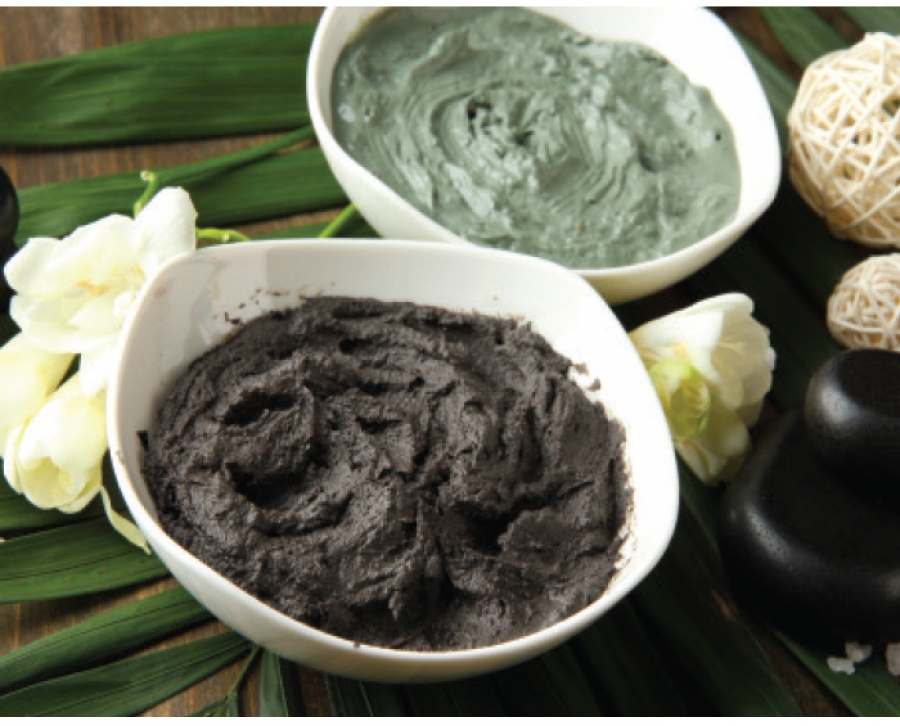Clay has been a staple in beauty rituals for thousands of years and its medicinal use dates back to the second century A.D. Naturopathic physicians have long used clay in protocols, both externally and internally, as a neutralizing agent, detoxifier, and even as a protectant from radiation.1 The peloids used for therapeutic use are typically blended with a mineral-based or geo thermal water, often used for the treatment of psoriasis, arthritis, rheumatism, and bone or muscle traumas.2 Clay is often referred to as a “living substance” and the natural affinity for clay to react with body composition in a healing or even detoxification capacity represents a very important biological correlation.
The earth’s crust contains an abundant amount of minerals that the body requires, and interestingly, the chemical composition of many rocks and minerals are aligned with chemistry aspects of the human body.
Because clay is comprised of minerals and elements, it contains ionic bonds that possess both positive and negative charges, depending on the elements in the clay. The cationic exchange capacity (CEC) is responsible for the balancing effect of clay and is one of its most unique and therapeutic factors. Clays also have the ability to absorb via a single bond between silicon and aluminum that is responsible for its ability to possess an electrical charge. Because of this factor, clays should never be placed in a microwave to be warmed or mixed in aluminum bowls, as this disrupts the ionic exchange and therapeutic function. Another unique quality of clay is that it has the ability to expand and bind to microorganisms and toxins. This factor exemplifies why clays and muds have been instrumental in the application of body treatments and detoxification protocols for centuries.
In the practice of holistic aesthetics, clays represent a high standard of therapeutics – as each type and color of clay offers nutrients and minerals synergistic to the skin and as such may address specific conditions. Pelotherapy may also utilize hydrosols, herbs, tinctures and essential oils that are blended with the mud or clay to address the needs of various skin conditions with a non-chemical approach.
The choice of clay for treatment is dependent on the clay sub type: the properties, composition, mineral content, pH, color, and addition of any nutrients. Many clay manufacturers blend clays to achieve various colors and application benefits.
The following are the three basic categories of clays used for peloids and masks:
- Bentonite – Also known as montmorillonite, is a “drawing” clay with the ability to attract toxins and absorb them into the clay for removal. Bentonite has a high mineral content and offers excellent detoxification and antibacterial properties.
- Illite – A non-swelling clay that is useful for its healing and soothing applications. Illite clays may contain sodium, potassium, and magnesium.
- Kaolin – Offered in a wide variety of colors and mineral compositions – it blends well with hydrosols, herbs, and essential oils. Typically kaolin contains magnesium, calcium, and potassium and is often mixed with montmorillonite.
Pelotherapy has an important place in the treatment room as a highly-customizable and therapeutic application for both skin and body therapies. Explore, experience, and create unique formulas from nature with clay and discover an innovative alternative in mask applications.
References:
1. History of Healing Clay, (2006). www.aboutclay.com
2. Barberis, Elisabetta, Carcangiu, Gianfranco, et al., (2004). Formulation of muds for pelotherapy: effects of “maturation” by different mineral waters, Elsevier Science Direct, 25: 135-48.
